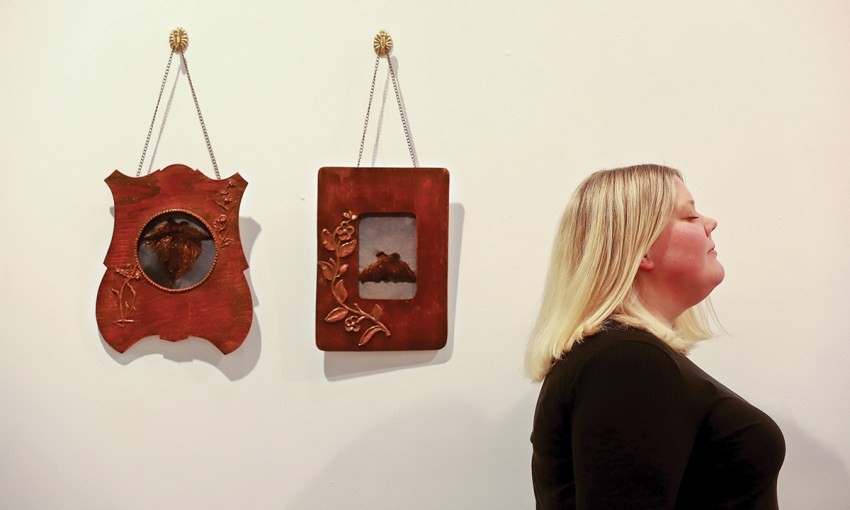Bordertown’s Walkway Gallery is a beacon of artistic expression in an agricultural landscape, thanks to director Naomi Fallon.
Pushing the border
It was the day Bordertown got a show, but the kind rarely written about in art journals.
In the spring of 2017, traffic stopped to watch five stoic council workers wrestling a towering artwork across the main street. With amused farmers watching on, Walkway Gallery director Naomi Fallon had a brief moment of panic.
The artworks simply wouldn’t fit through the doors, leading to a highly unofficial public opening.
“We had to literally unpack the work on the road,” she says. “There were two giant nude women with eight boobs and three vaginas, cling-wrapped because it was raining. It was a comedy of errors.
“People must think I’m nuts.”
It was perhaps the perfect entrance for artist Del Kathryn Barton’s often controversial works to the small regional centre of Bordertown – population 2900.
Folded into South Australia’s border with Victoria, the town is more farming and football than arts and culture. Over her decade as gallery director, Naomi has striven to make the Walkway a tourism destination in itself.
“Why should we be boring?” she asks. “We don’t shy away from controversy because that brings in the crowds. People can come at me and say, ‘I hate this work; it’s really confronting’.
“Well, you don’t have to like the work, as long as you’re having a conversation about it.”
The conversations flew thick and fast in 2016, when the Walkway became the first regional gallery to host a collection by Archibald Prize winner Ben Quilty, the first time the Art Gallery of South Australia had loaned out its coveted contemporary collection.
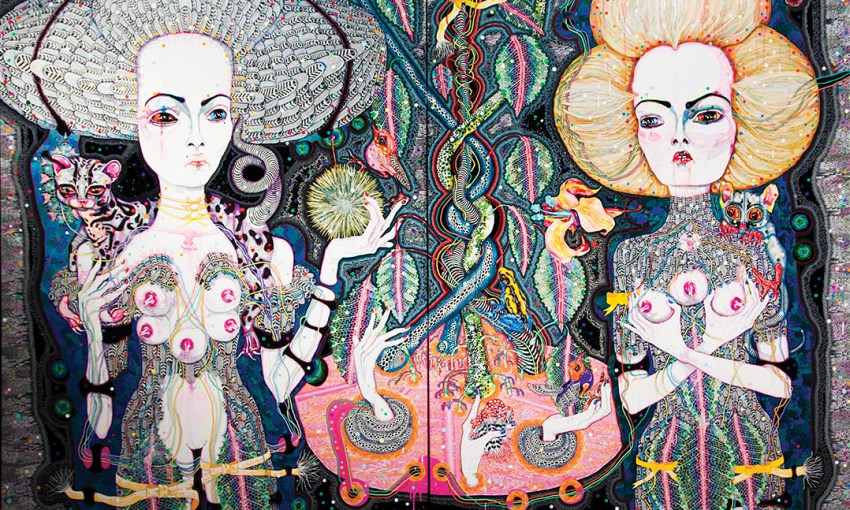
Smashing attendance figures and drawing art lovers from all over Australia, the Quilty exhibition “put the Walkway on the map”, bringing 175 requests to exhibit and visitors galore.
In 2019, more than 26,000 visitors came through the gallery doors, the town’s population nine times over.
When it comes to programming, Naomi admits she takes a certain delight in throwing the cat amongst the pigeons.
Over the last five years, Walkway audiences have experienced a plethora of challenging themes, from Australia’s place in indigenous history, to sex, feminism and even the death of babies.
“We can take a lot more risks in a regional gallery; it’s ripe for experimentation,” Naomi says.
“Regional galleries are important because they’re a gateway for people experiencing art for the first time. We’re the junction between people and art; the connection point.”
Sensitive to her home audience, Naomi lets everyday experiences lead to themes for upcoming shows.
Upon discovering her young hairdresser didn’t believe in feminism, Naomi scheduled Del Kathryn Barton’s Red at the Walkway in 2017, a short live-action film delving into the mating instincts of the redback spider.
Entwining themes of death and love, Naomi says the work discussed feminism in “a non-obvious way”.
After seeing the exhibition, the hairdresser messaged Naomi to tell her of dreams she’d had about being the redback spider and about feelings of being in charge of her own life.
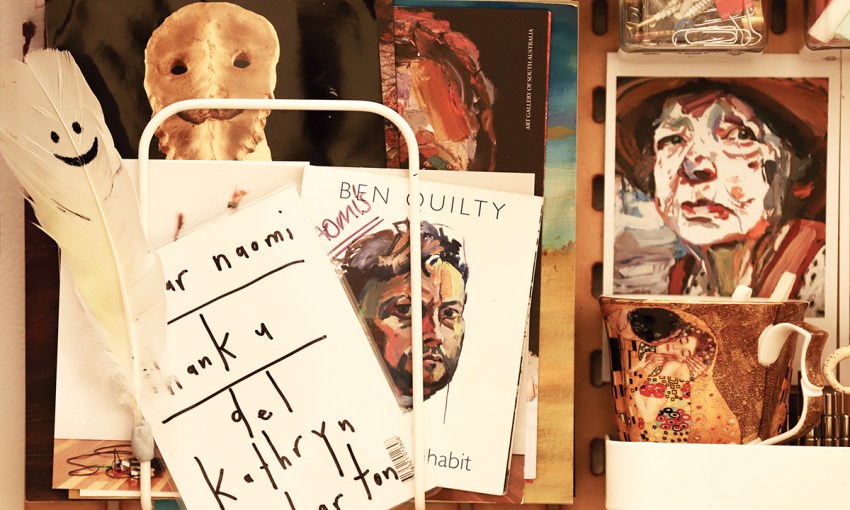
“She said ‘I think you got through to me’. It was the best message I ever received.”
However, it’s been the local art competition that has proved the steepest learning curve of all for the young director.
The biennial Tatiara Art Prize, attracting around 200 entries a year, brings out the ‘armchair experts’ in force, according to Naomi.
In 2017, three judges – all industry experts – gave the top prize to a conceptual sculpture called Black #2 by Adelaide artist Anna Horne, but locals vehemently disagreed with the decision.
“It was amazing, the clear stand-out, but the community didn’t understand conceptual art or engage with it,” Naomi says.
“I actually received death threats about it. People were so passionate about it winning and everyone had an opinion. But they’re engaging with us about art.”
“Now we bring our elected members in to learn why the judges picked that piece and how to speak about it at a community level.”
Naomi is keenly aware of supporting and celebrating local artists.
“Our gallery exists because of our local artists,” she says. “It’s called the Walkway because the local art group – The Tatiara Palette Painters – co-opted the walkway between two buildings for their work and so, the Walkway was born.”
When the Tatiara District Council redeveloped the civic centre complex around 2009, the original plans didn’t include a gallery space.
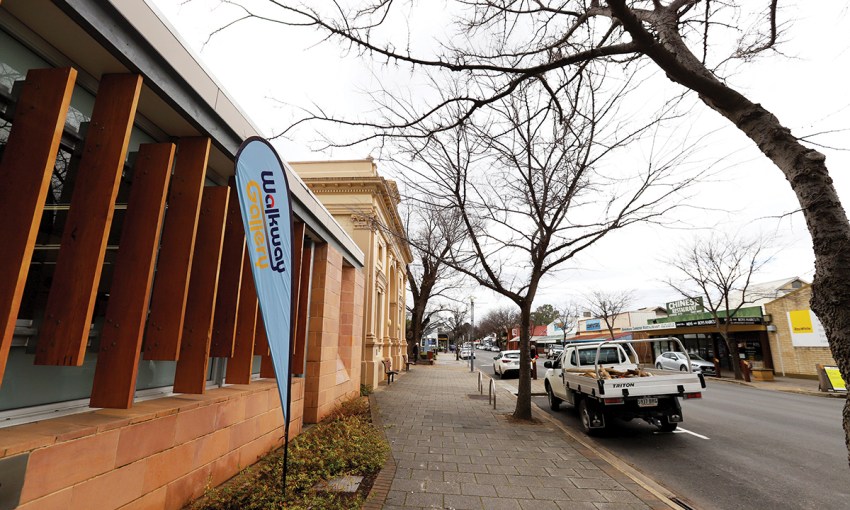
Facing a community backlash, council rose to the challenge.
When the gallery opened in 2010, it was a state-of-the-art space, featuring specialised lighting and staging features and temperature and humidity control, making it eligible to stage major shows.
Also new to Bordertown was a fledgling gallery director who happily admitted she had ideas and enthusiasm aplenty but zero experience in running a successful arts space.
“I was very green,” says Naomi. “I had no idea how to hang work or how to deal with censorship or trigger warnings.”
Her own first encounters with art came growing up in neighbouring Lucindale, through the hands of art teacher Julie McEwen or “Mrs Mac”.
Naomi was one of just two students in the arts class.
“I was all about the art and Mrs Mac saw that in me,” she says.
“There were many occasions she would pick me up at 5am and take me to Adelaide to go to exhibitions, like the Year 12 Graduate Art Show.”
Inspired, a teenage Naomi went on to complete work experience at Mount Gambier’s Riddoch Art Gallery.
It’s the continuing partnerships with regional and metropolitan galleries to which Naomi attributes to the success of the Walkway.
Another factor comes direct from the gallery director herself, in never being afraid to ask the question: “Can we borrow that collection?”.
“They can only say no,” Naomi says. “Why should I have to travel to see great art?”
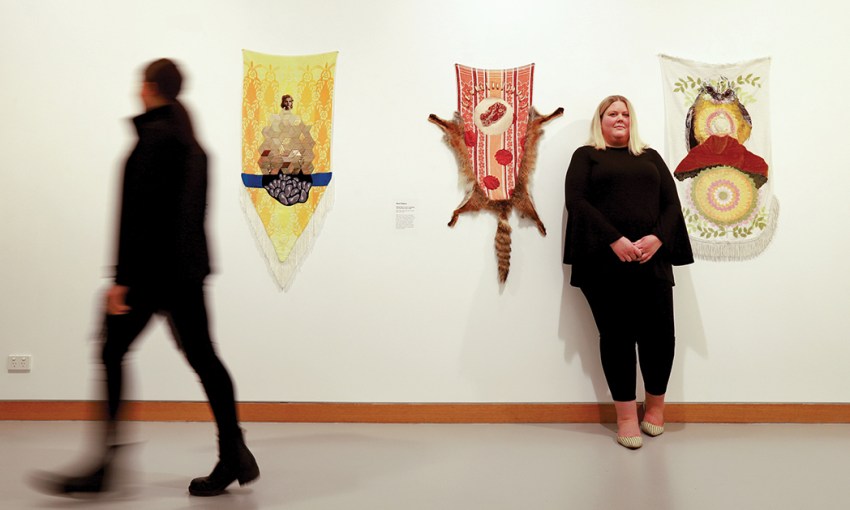
Rising serenely over the paddocks of Bordertown in the predawn light in mid-February 2022 will be a 10-storey-tall hot air balloon family, which Naomi describes as “weirdly beautiful”.
Bringing renowned artist Patricia Piccinini’s Skywhale to Bordertown is Naomi’s latest coup. Admitting there were “screams down the phone” when the National Gallery of Australia rang to invite the Walkway on the show’s regional tour, Naomi’s initial excitement has shifted to nerves at the complex logistics of bringing a national show to life in COVID times.
“You bring a piece of yourself along to every exhibition,” she says. “If I’m nervous, I think I’ve made the right decision. I think risk spurs people on to make it work.
“Skywhale will draw people’s focus to Bordertown and we’re really going to lean into that,” says Naomi.
As the balloons rise, tucked away somewhere away from the chaos Naomi will be quietly enjoying the spectacle and hoping to set a spark in motion.
“All it needs to be is one kid who is touched by a work that changes their trajectory and chooses art instead of agriculture,” she says. “That’s huge. That’s more important than crowds.”
This article first appeared in the October 2021 issue of SALIFE magazine.



